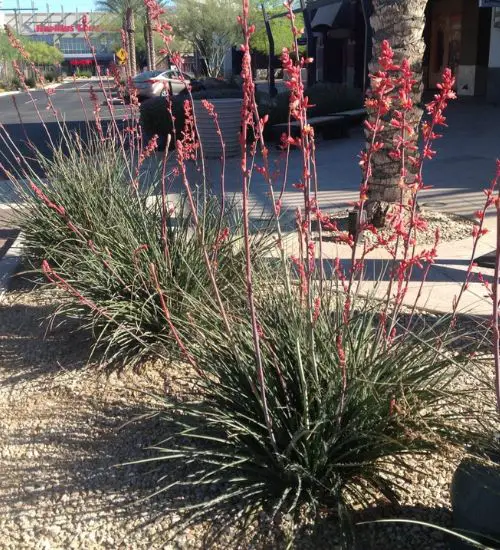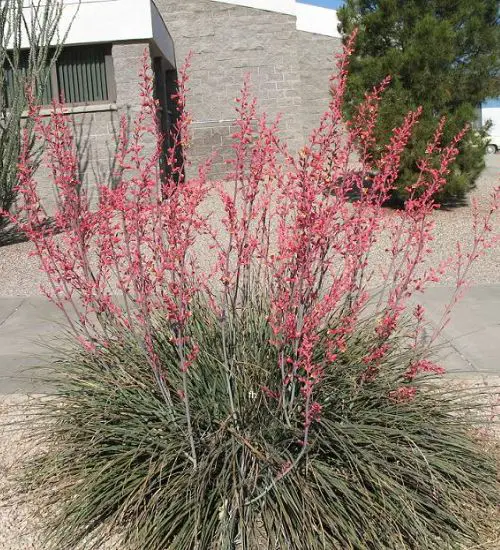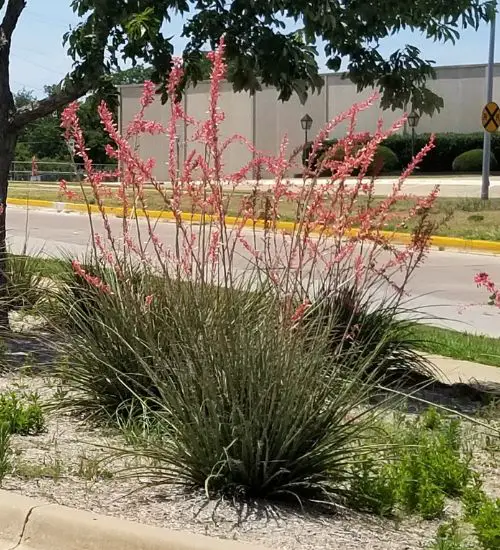Sun: full sun
Water: Below average watering needs for a succulent
Temperature: Zone 1a from -60° F to -55° F (-51.1 ° C to -48,3° C) to Zone 5b from -15° F to -10° F (-26.1 ° C to -23.3° C)
Winter Survival: Cold hardy
Propagation: seeds
Flower: in the late spring and summer
Flower Type: Red-Orange, pink - orange
Toxic: Toxic to humans and animals
Dormant: winter
Space Requirement: Outdoors
Common Problems: Fungal diseases, pests
Where to buy Hesperaloe Parviflora?
Basc Care for Hesperaloe Parviflora
Watering
Watering for Hesperaloe Parviflora is a simple task. It requires Below average watering needs for a succulent.
What you need to remember is that this type of succulents needs to be watered for every 2 weeks
Fertilizing
Only feed this succulent during its active growing seasons which means winter. Use the right fertilizer applied in the right amounts. Applying half-strength balanced fertilizer every month or so is recommended for optimal results.
Do not fertilize during winter as the plant is dormant.
Sun & Location Requirements for " red yucca, coral yucca, hummingbird yucca, redflower false yucca, and samandoque"
Hesperaloe Parviflora needs at least six hours of direct sunlight every day in order to be healthy and happy. Place your succulent outdoors or near a sunny window, and check its leaves regularly – they should be bright green and firm. If the leaves start to look weak or pale, it's an indication that the succulent isn't getting enough sun.
As per this succulent profile, it is only able to stay healthy when the environment temperature is above the range of zone 1a from -60° F to -55° F (-51.1 ° C to -48,3° C).
Hesperaloe Parviflora is known for its cold hardiness and ability to survive in frigid winter temperatures. This succulent's thick leaves and stems help it retain moisture, aiding it in surviving freezing temperatures. Additionally, the succulent's attractive foliage offers a festive touch to any garden in cold climates. With its ability to survive down to 0°F, " red yucca, coral yucca, hummingbird yucca, redflower false yucca, and samandoque" is an excellent choice for areas with frosty winters.
Any succulents in the group will need a large space to grow. You should place your pot outdoor. Since this plant needs a lot of space than other succulents, you should consider not planting them together with other succulents/plants.
Propagation
Growing Hesperaloe Parviflora from seeds is an easy and economical way to produce more plants. Identify a healthy seed by its plumpness, dark color and slightly sticky texture. Once the potting mix has been pre-mixed with well-draining soil, sow the seeds evenly and press lightly into the surface. To ensure germination, keep the container in bright but indirect light and mist the soil gently with a spray bottle.
Toxicity

All parts of Hesperaloe Parviflora are considered to be poisonous, and should never be ingested. Even contact with the sap can cause serious skin irritations in humans and animals, so it’s important to wear gloves when handling them.
Pests and Diseases
Hesperaloe Parviflora can be affected common pests and diseases like most of the other succulents such as aphids and scale insects.
If you do spot any of pest signs, you can treat your succulent using below methods.
- Aphids: quarantine, clean infected plants, soapy water.
- Scale insects: quarantine, clean infected plants, soapy water.
Besides that, to prevent serious health issues from happening, keep your succulent in a well-ventilated area and check it regularly for any signs of pests or health problems.


